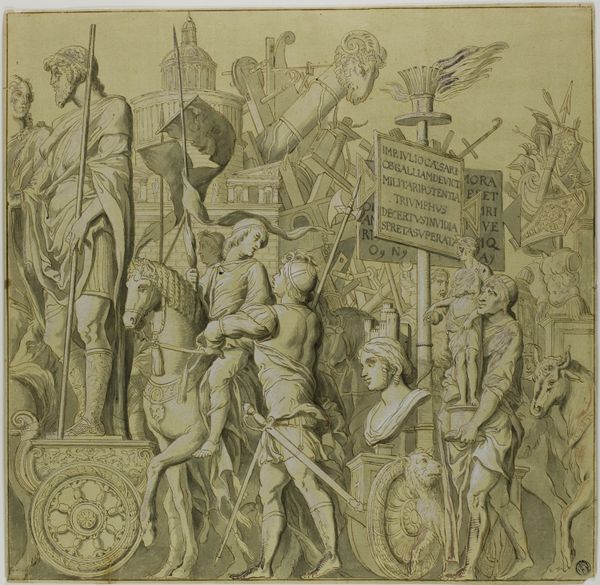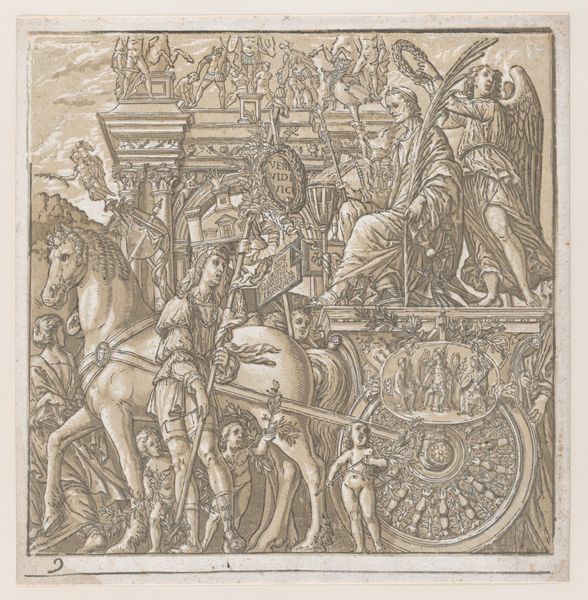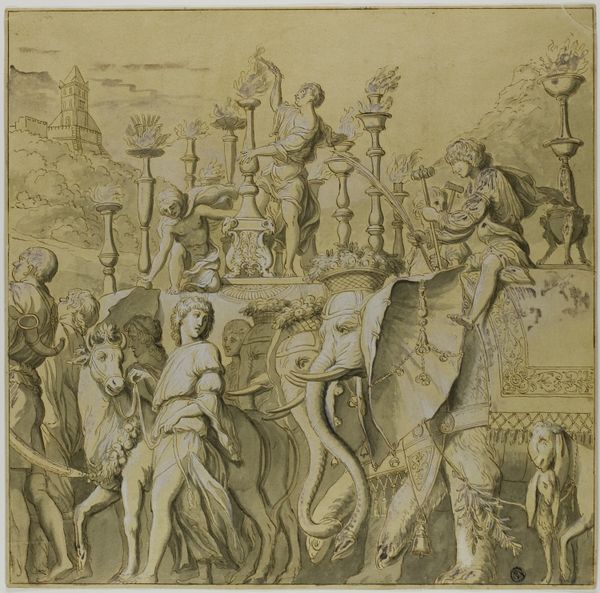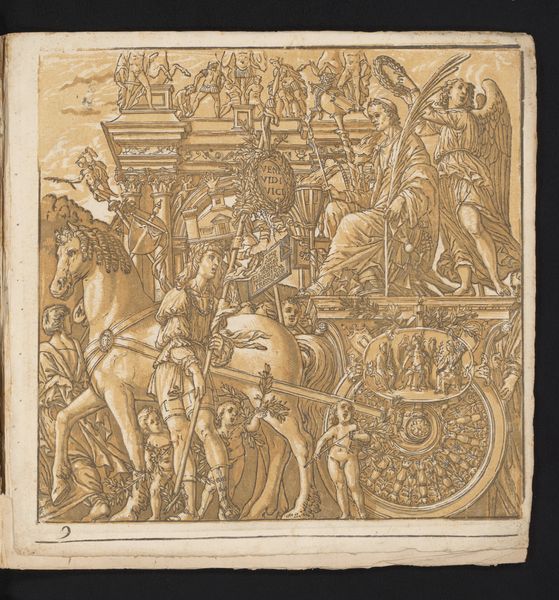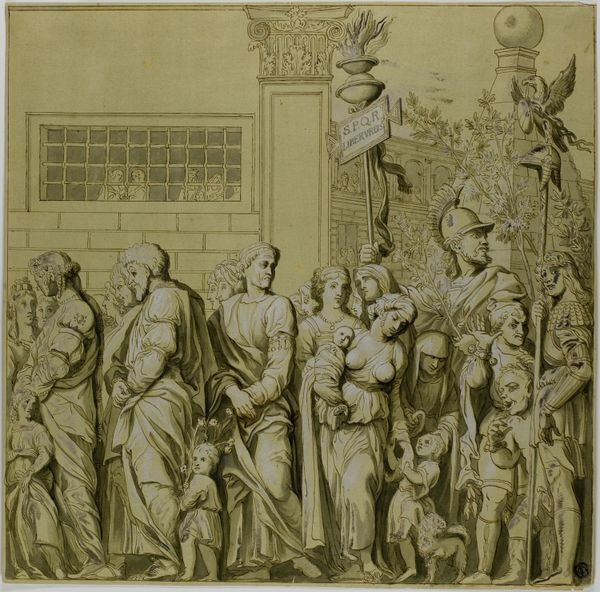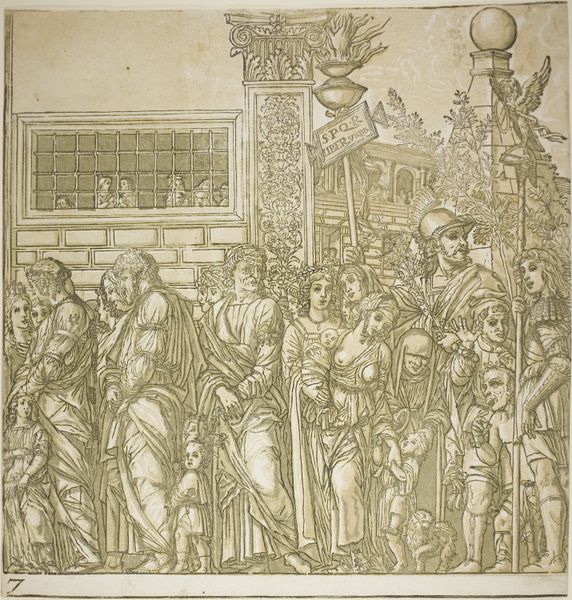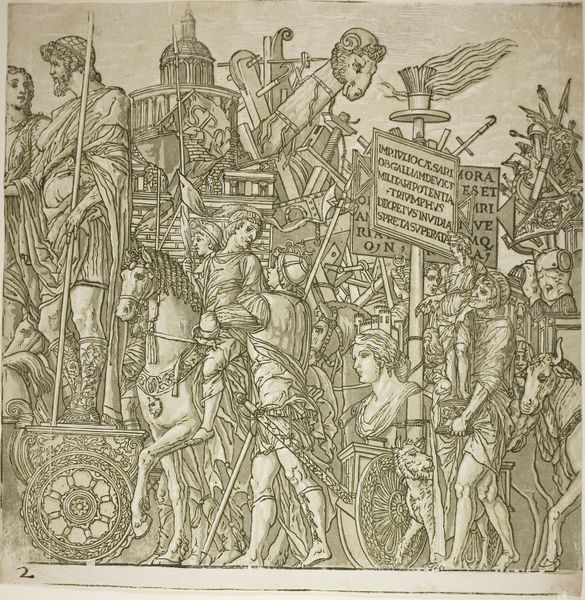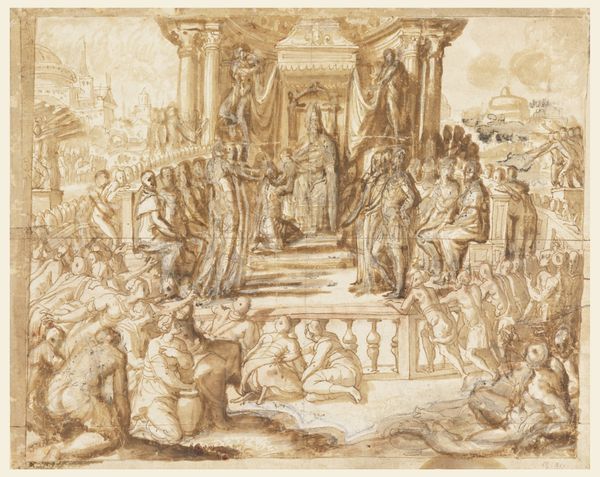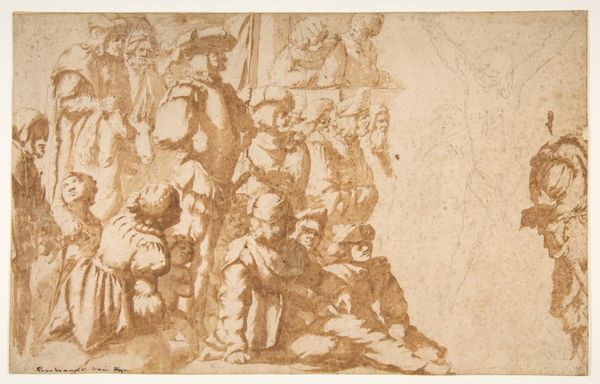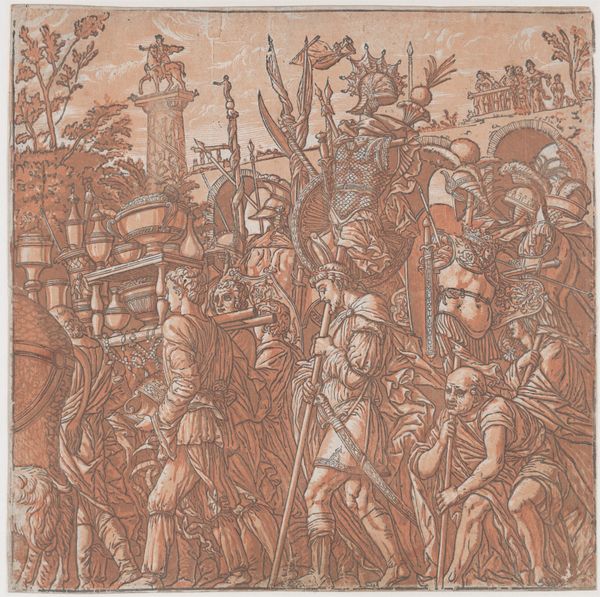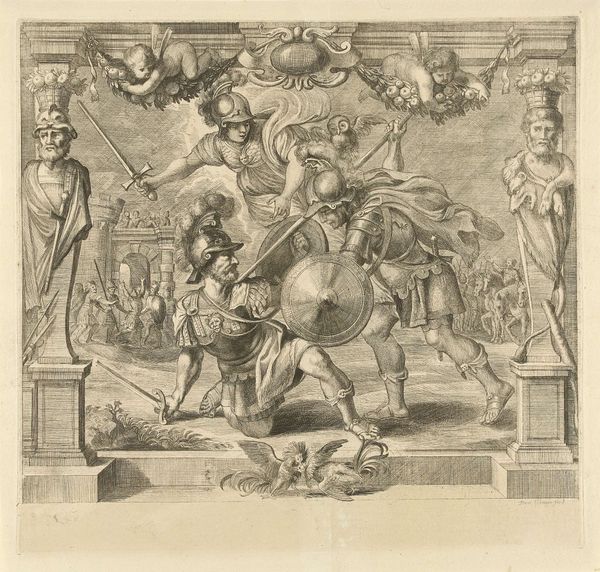
Triumphs of Julius Caesar: Canvas No. IX c. 18th century
0:00
0:00
drawing, print, paper, ink
#
drawing
#
allegory
# print
#
classical-realism
#
charcoal drawing
#
figuration
#
paper
#
11_renaissance
#
ink
#
history-painting
#
academic-art
Dimensions: 372 × 377 mm
Copyright: Public Domain
Editor: Here we have "Triumphs of Julius Caesar: Canvas No. IX," thought to be created around the 18th century after Andrea Mantegna. It’s a drawing using ink and paper, and there's so much happening! It has such an intense feel. What do you see in this piece? Curator: Well, the "Triumphs of Caesar" was a really influential series. The original paintings, now quite damaged, were meant to be displayed together as a continuous frieze. Looking at this drawing, consider the *idea* of triumph itself as public spectacle. How was Caesar, or Roman authority more broadly, presented and *consumed* by the public through imagery? Editor: That makes me think about political rallies now...so it's not just art, but also about power. Curator: Exactly. This drawing speaks to the power of classical imagery and how it was reinterpreted throughout history. The original series was created during the Italian Renaissance, but this drawing is from the 18th century, a period still deeply invested in classicism. This later version shows how persistent these visual strategies were for legitimizing power. Why do you think that is? Editor: Hmm...maybe because referencing such a powerful historical figure lends the *new* power some of that glory by association? Curator: Precisely! The composition, with its emphasis on procession and detail, is meant to overwhelm the viewer, asserting dominance not only of Caesar but also the person or institution displaying this image. Consider how the Art Institute of Chicago, by exhibiting this piece, also participates in this play of power. Editor: I didn't realize how much the placement and ownership of art affected its meaning. Curator: Absolutely. The social and institutional contexts are crucial. Editor: Thanks, that perspective really opens it up. I will definitely think about who the image serves and why!
Comments
No comments
Be the first to comment and join the conversation on the ultimate creative platform.
